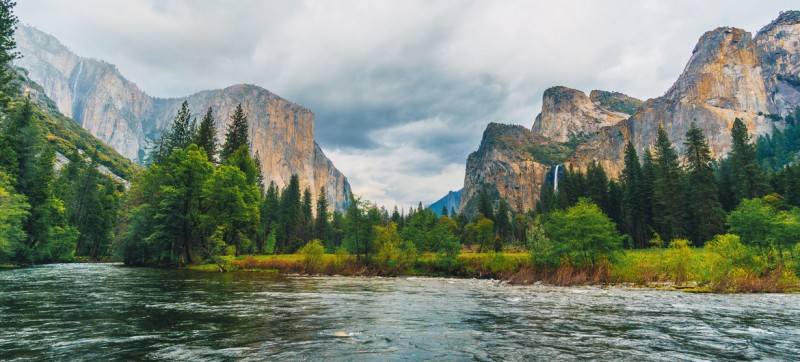Yosemite National Park in the USA is one of ten World Heritage Forests that has gone from removing carbon from the atmosphere to emitting it. Forests in at least ten World Heritage sites have become net sources of carbon, due to pressure from human activity and climate change, according to a new report released on Thursday, by the UN Educational, Scientific and Cultural Organization (UNESCO). The agency’s new analysis, World Heritage forests: Carbon sinks under pressure , shows that instead of helping mitigate global warming, some of the world’s most treasured forests are in fact adding to overall CO2 emissions. The first ever scientific assessment of greenhouse gas emissions in forests on the UNESCO World Heritage list, has found that since the turn of the millennium, some forests such as the Yosemite National Park in the United States, and the Rio Platano Biosphere Reserve in Honduras, have released more carbon that they sequestered due to wildfires, deforestation and global heating. Given that the sites are highly prized and protected, the fact that 10 of the 257 forests surveyed are showing a carbon surplus, between 2001 and 2020 due to human activity, is alarming, said UNESCO. Alarming
According to UNESCO’s findings, at some sites the clearance of land for agriculture caused emissions to be greater than sequestration. The increasing scale and severity of wildfires, often linked to severe periods of drought, was also a predominant factor in several cases. Other extreme weather phenomena, such as hurricanes, contributed at certain sites.
For Tales Carvalho Resende, co-author of the report, the date provides “evidence of the severity of this climate emergency’.
Forests’ vital role
The news is not all bad. The same research also reveals that overall, the network of 257 forests in World Heritage sites, played a vital role in mitigating climate change, by absorbing 190 million tons of CO2 from the atmosphere every year. That’s roughly half of the United Kingdom’s annual CO2 emissions from fossil fuels.
World Heritage forests, whose combined area of 69 million hectares is roughly twice the size of Germany, are biodiversity-rich ecosystems.
In addition to absorbing CO2 from the atmosphere they also store substantial amounts of carbon.
According to the report, carbon sequestration by these forests over long periods has led to total carbon storage of approximately 13 billion tons, which is more than the carbon in Kuwait’s proven oil reserves.
Drawing the most detailed picture to date of the vital role that forests in World Heritage sites play in mitigating climate change, the report shows that strong and sustained protection of those sites and surrounding landscapes can contribute to effective solutions for climate change mitigation, adaptation and biodiversity.
Better decision-making
By combining satellite-derived data with monitoring information at the site level, researchers at UNESCO, the World Resources Institute (WRI) and the International Union for Conservation of Nature (IUCN), were able to estimate the gross and net carbon absorbed and emitted by UNESCO World Heritage forests between 2001 and 2020 and determine the causes of some emissions.
This analysis of iconic sites showed that combining satellite data with on the-ground-information can improve local decision-making and strengthen accountability, thereby helping forests, climate and people.
Recommendations
According to UNESCO, in the coming years, ongoing sequestration and carbon sinks are likely to be affected at a growing number of sites worldwide, as a result of increasingly fragmented and degraded landscapes, and more frequent and intense climate-related events.
To address the problem, the report urges increased and sustained protection of UNESCO World Heritage sites and their surrounding landscapes to ensure their forests can continue to act as strong carbon sinks and stores for future generations.
To achieve this, the report recommends a more urgent response to climate-related events, as well as maintaining and strengthening ecological connectivity through improved landscape management.
For example, in Indonesia, government agencies have been using near real-time fire alarm systems to significantly reduce their average response time.
10 World Heritage Forests that are emitting more carbon than they absorb
- Tropical Rainforest Heritage of Sumatra, Indonesia
- Rio Platano Biosphere Reserve, Honduras
- Yosemite National Park, United States
- Waterton Glacier International Peace Park, Canada & United States
- Barberton Makhonjwa Mountains, South Africa
- Kinabalu Park, Malaysia
- Uvs Nuur Basin, Russia & Mongolia
- Grand Canyon National Park, United States
- Greater Blue Mountains Area, Australia
- Morne Trois Pitons National Park, Dominica




Comments are closed.